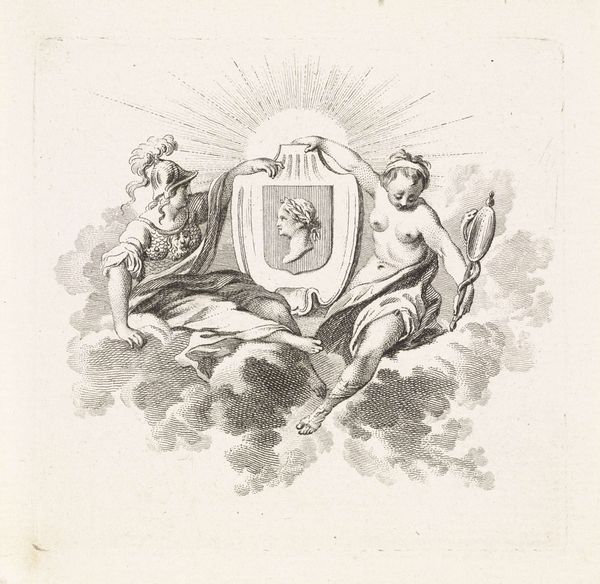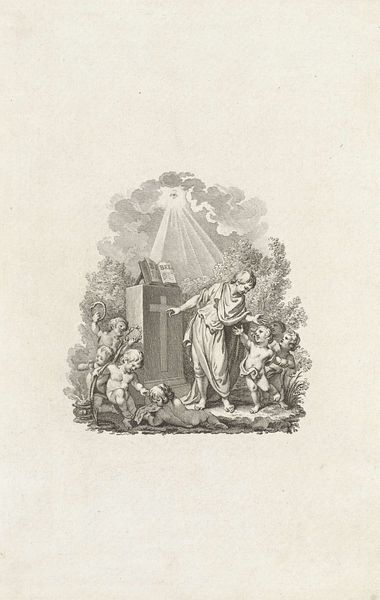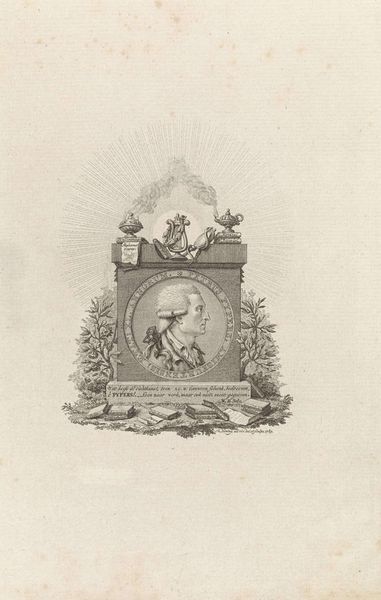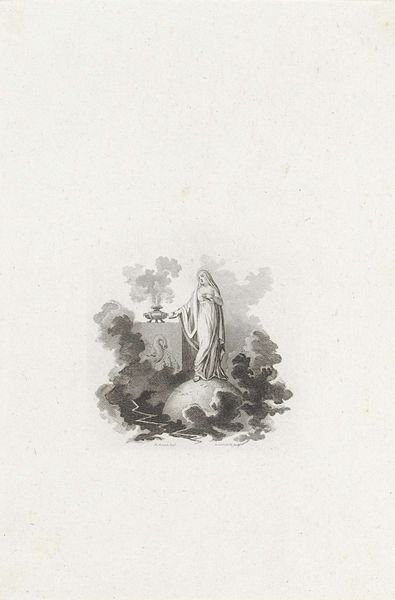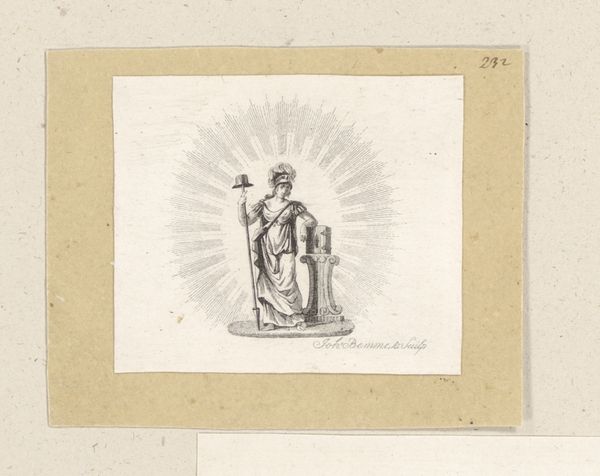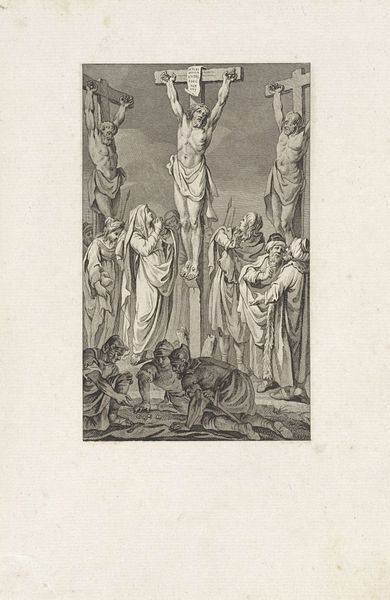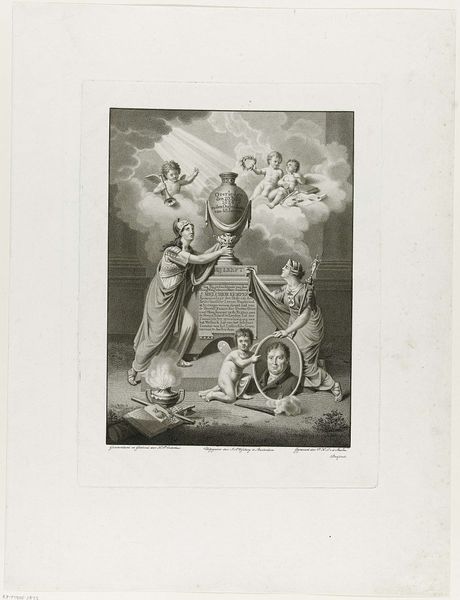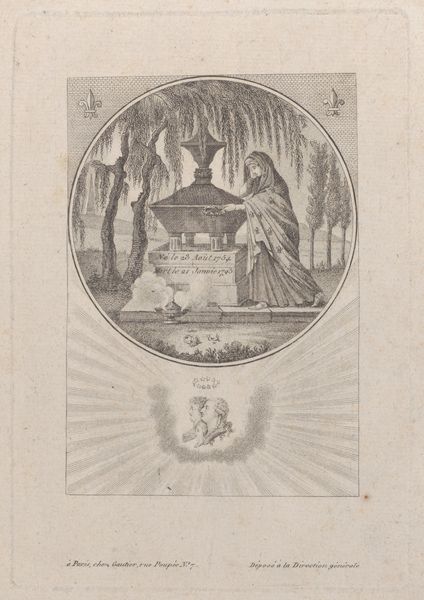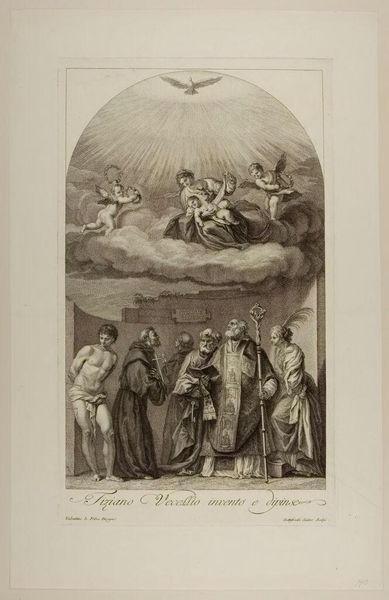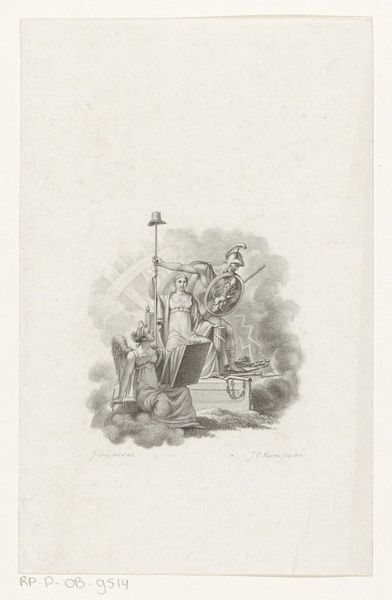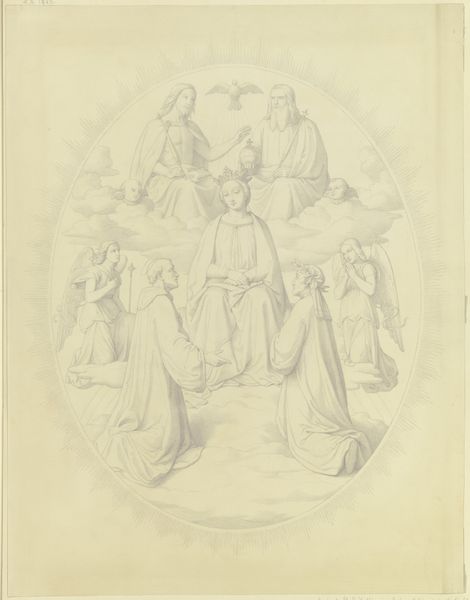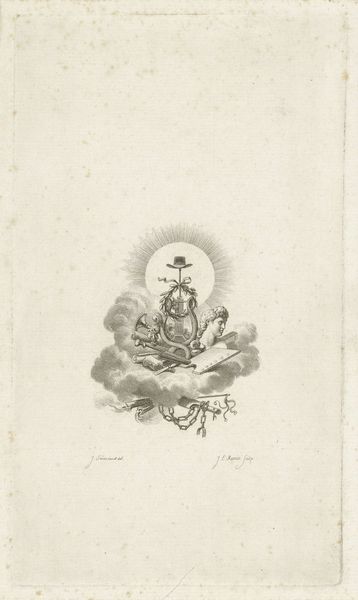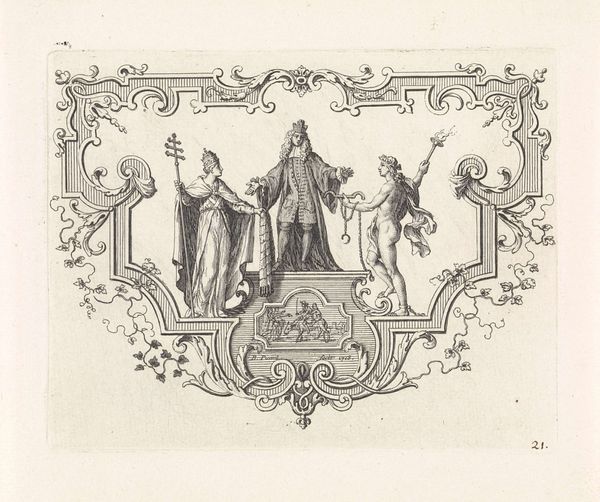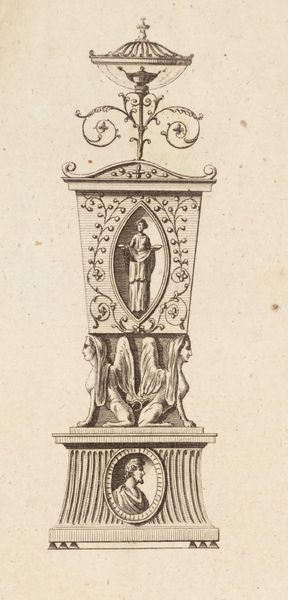
Allegorische voorstelling met twee personificaties van de waarheid 1797 - 1836
0:00
0:00
print, engraving
#
neoclacissism
#
allegory
# print
#
figuration
#
history-painting
#
engraving
Dimensions: height 231 mm, width 142 mm
Copyright: Rijks Museum: Open Domain
Curator: Welcome. Here we have "Allegorische voorstelling met twee personificaties van de waarheid," which translates to “Allegorical Representation with Two Personifications of Truth.” It is an engraving by Philippus Velijn and was made sometime between 1797 and 1836. Editor: The scene is so ethereal! The two female figures, draped in classical robes, practically float in this misty landscape. There is a feeling of something sacred. Curator: Velijn worked as an engraver, producing prints for a wide audience. This particular piece fits into the Neoclassical movement, embracing allegory to convey deeper meanings. The engraving process allowed for the widespread distribution of these ideals. Editor: The symbols are fascinating. On the left, we see a woman holding a trumpet, perhaps signifying proclamation, with what appears to be an upturned cornucopia spilling out fruit and flowers nearby. The figure on the right holds a mirror, gazing into it. The temple hovering over the figures really catches the eye. It is labelled as 'Temple der Waarheid', Temple of Truth in english. What do you make of their association? Curator: The two figures together likely represent different aspects of truth: perhaps one outward, assertive truth, and another more introspective or reflective one. This engraving, by its very nature as a widely produced print, served as a powerful tool for shaping and disseminating the concepts surrounding 'Truth'. Notice the tonal variation Velijn achieves with this simple medium: areas are either very light or quite dark. Editor: Considering the period it was made, between the late 18th and early 19th centuries, I'm curious about the intent behind these allegorical figures. What role did these types of idealized images play in the wider culture? Curator: Allegories like these were a way to visually communicate complex ideas about morality and civic duty. Engravings would often circulate as illustrations in books or as independent prints. It served as an easily understandable propaganda tool. The idea of Truth could inspire citizens to act with integrity. Editor: It is intriguing to consider this image's circulation, how it was produced, sold, and how that access influenced the reception of it and the values represented by those that consumed it. This really highlights the role these materials have had in shaping societal ideas. Curator: Precisely! We are offered so much by examining this engraving within the means of production and the ways those ideas are circulated throughout wider society. It really pushes our ideas of accessibility within artwork. Editor: Reflecting on Velijn’s “Allegory,” it strikes me how potent the symbolism can be in visually shaping collective memory and, potentially, our future hopes.
Comments
No comments
Be the first to comment and join the conversation on the ultimate creative platform.
